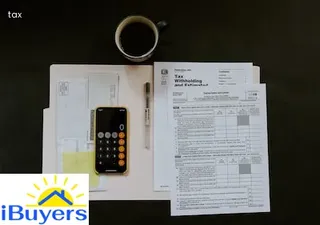Creating a Kentucky Quit Claim Deed requires certain pieces of information. To complete the deed, you'll need to provide the legal names and addresses of both the grantor (the person giving up ownership rights) and the grantee (the person receiving ownership rights).
Additionally, you must include a detailed description of the property being transferred, including its current address. You should also include any special conditions or restrictions that may apply to the transfer.
When all of this information is gathered, you can then proceed with completing the deed itself with your state's required language. Finally, you should have two witnesses sign and date the document before it can be notarized.
Once all these steps are completed, your Kentucky Quit Claim Deed will be ready for filing with your county clerk's office.

In Kentucky, there are several different types of deeds used to transfer ownership of property. A Quit Claim Deed is one of the most commonly used, and is often utilized when transferring real estate from one party to another.
This type of deed provides a quick and easy way to transfer a person’s interest in a particular piece of property without making any promises or warranties about the nature of their title or interest. It is important to note that with this type of deed the seller does not guarantee the buyer will receive clear title, so it is important for buyers to do their own due diligence when assuming ownership through a Quit Claim Deed.
Another common type of deed in Kentucky is the Warranty Deed, which provides assurances that the seller owns clear title and will defend it if necessary. Both Quit Claim Deeds and Warranty Deeds can be used to convey real property such as single family homes, condominiums, multi-family dwellings, land, and commercial buildings.
In both cases, appropriate paperwork needs to be completed properly in order for the transaction to be valid.
When creating a Kentucky Quit Claim Deed for your house, it is important to understand the implications of title insurance. Title insurance protects the buyer in case someone else has a claim on the property that was not disclosed during the sale.
Without this coverage, you could be liable for any judgments against the property or be forced to defend a claim in court. When filing a quitclaim deed, it is important to check with your local county clerk office to make sure that all necessary documents are filed correctly and that you will receive title insurance prior to closing.
Additionally, research any legal issues that may affect the status of your deed and investigate if there is anything else needed before filing. By understanding title insurance and researching any other possible concerns when filing a quitclaim deed, you can protect yourself from potential legal issues down the line.

Creating a quitclaim deed in Kentucky is an important part of estate planning and can have a significant impact on the transfer of property. A quitclaim deed is used to transfer rights to real estate from one person to another, without providing any warranties or guarantees about the rights being transferred.
By creating a quitclaim deed, the grantor (the person transferring their rights) releases any claims they have on the property, including any title and legal interest they have in it. This makes it easier for them to pass on their rights without having to worry about any potential legal issues that could arise later.
In addition, using a quitclaim deed can simplify the process of transferring title by eliminating some of the paperwork associated with other types of deeds. Before creating a quitclaim deed, it's important to understand how it may impact estate planning in Kentucky.
The grantor should be aware that if there are any outstanding liens or judgments against the property, the grantee (the person receiving the rights) could be responsible for those debts. Additionally, there may be taxes due when filing a quitclaim deed, so these should be taken into consideration before making any decisions.
Ultimately, understanding how a quitclaim deed works and its potential impacts on estate planning can help ensure that the property is properly transferred and the grantor's wishes are honored upon their passing.
In Kentucky, a Quitclaim Deed is used for transferring real estate ownership from one person to another without any warranties regarding the property. A Quitclaim Deed Form is particularly useful in situations when an owner wants to transfer property between family members or when an owner needs to add or remove a name from a deed.
It can also be used if a married couple wants to add their spouse's name to the deed after they get married, or if they want to remove the spouse's name after getting divorced. In addition, it can be utilized if two people are co-owning property and one of them wants to buy out the other’s share.
Lastly, it can be used by an heir that inherits property and wants to transfer it into their own name. In all of these common situations, utilizing a Kentucky Quitclaim Deed Form is essential for ensuring that the transfer of ownership happens properly and legally.

Creating a Kentucky Quitclaim Deed for your house is easy, but it is important to be sure that you complete the form correctly and follow all applicable laws. First, you will need to identify who the grantor and grantee are on the deed.
The grantor is the person transferring property ownership, while the grantee is the person receiving it. Next, you should include a legal description of the property being transferred, which includes its address and a detailed map of its boundaries.
Once this information has been filled out accurately, both parties should sign and date the document in front of two witnesses. Lastly, ensure that you file the deed with your local county clerk's office in order to make it legally binding.
Following these steps will help ensure that your Kentucky Quitclaim Deed meets all necessary requirements and can be successfully executed.
Creating a quit claim deed in Kentucky requires attention to detail and a solid understanding of the legal process. It is important to understand that the deed must be signed by both parties in order to be considered valid, and it must include the full name and address of each party involved.
Additionally, it is essential that all pertinent details such as the legal description of the property, the seller's name, and any restrictions or covenants associated with the property are accurately represented. Furthermore, it is important to keep in mind that any false information provided on a quit claim deed will render it invalid.
Lastly, when filing a quit claim deed in Kentucky, make sure that you include your county's filing fee along with two copies of the completed document for filing purposes. Taking these steps will ensure a smooth transition when creating a quit claim deed for your house in Kentucky.

When it comes to creating a Kentucky quitclaim deed for your house, there are certain laws that must be followed in order to ensure the legal transfer of ownership. The first step is to make sure you are qualified to create and sign the document, as it needs to be done by an owner of the property listed on the deed.
Once this is established, you can begin preparing the actual deed itself. It must include all relevant information about the property being transferred, such as its location, size and boundaries.
Additionally, a description of any improvements made to the property should also be included. Furthermore, you will need to provide details about both parties involved in the transaction and have them sign off on it before filing it with the county clerk’s office.
Lastly, if there is a mortgage associated with the property that needs to be discharged before transferring ownership, then you must provide proof of payment for this in order for the process to be complete. Taking these steps into consideration when creating a Kentucky quitclaim deed will help ensure that everything goes smoothly when transferring ownership of a house.
When it comes to real estate transactions in Kentucky, there are a few other documents that need to be taken into consideration along with the Quit Claim Deed. A title search should be done to ensure that the person transferring the property is the rightful owner and has the legal authority to do so.
Additionally, a Bill of Sale or deed of trust is often required for certain types of property. If a mortgage is involved, then relevant documents such as promissory notes, deeds of trust, and loan applications must also be considered.
Depending on local regulations, inspections may also need to take place prior to closing which could require additional paperwork. Finally, it's important to remember that taxes will likely be due upon completion of the transaction and any relevant paperwork should be taken care of before signing anything.

Creating a Kentucky Quit Claim Deed for your house requires downloading or creating the appropriate templates. While you can usually find free templates online, it is important to make sure that any template you use meets the legal requirements of your county.
Before downloading or creating a template, be sure to check with your county clerk's office to ensure that the form is valid. Once you have found a suitable template, fill in all necessary information such as the property deed address, names of involved parties and their contact information, and description of the property being transferred.
Depending on the county where you are filing, additional documents may need to be included such as an affidavit verifying ownership of the property or an acknowledgement from both parties involved in transferring deed rights. Once all necessary information has been gathered and filled out correctly according to state laws, you will be ready to submit your Kentucky Quit Claim Deed.
Real estate transactions in Kentucky often require the use of various types of documents. One of the most popular is a Kentucky Quit Claim Deed, which is used to transfer ownership of a house from one person to another.
This type of document is important for ensuring that all parties involved in the transaction are legally and financially responsible for what they have agreed upon. In order to create a Quit Claim Deed for your house, you must follow certain procedures and provide specific information about yourself and the other party involved in the transaction.
You will also need to make sure all documents are signed by both parties before filing them with the county clerk's office. Once filed, you will receive an official copy of your Quit Claim Deed from the clerk's office, which you can use as proof of ownership in any future real estate transactions.

Creating an official Kentucky Quitclaim Deed is a simple process requiring certain steps to be completed. First, the deed must be written on legal-sized paper and must include the names of all involved parties as well as a description of the property being transferred.
The document must also include signatures from both the grantor (seller) and grantee (buyer) in order for it to be valid. After signing, the deed must then be notarized by a licensed notary public with all parties present in order for it to become legally binding.
In Kentucky, witnessing requirements are waived when completing a Quitclaim Deed; however, all other steps for properly executing the document remain essential. Once completed and notarized, additional copies should be made for filing purposes with the County Clerk's office where the property is located.
This ensures that proper title transfer has taken place and protects all parties involved in this transaction.
Creating a Kentucky Quit Claim Deed is an important process when it comes to transferring ownership of your house. A certified copy of the deed serves as an official record that documents the transfer of ownership, providing many benefits for both the buyer and seller.
Not only does it provide legal protection for both parties, but it also ensures that all taxes and fees associated with the sale are accurately tracked. In addition, having a certified copy enables you to more easily obtain financing or sell your home in the future.
Furthermore, by signing a certified copy of the Quit Claim Deed you can be certain that any disputes regarding rights or restrictions related to the property will be resolved quickly and easily. Lastly, a certified copy provides peace of mind knowing that your transaction is recorded correctly and any potential problems will be addressed efficiently.

Transferring property through a quitclaim deed in Kentucky can be beneficial for the seller, since it allows them to transfer ownership without having to worry about disclosing any details of the transaction. However, there are tax implications involved when transferring property through a quitclaim deed that need to be taken into consideration.
The state of Kentucky imposes a conveyance fee on all real estate transactions, which must be paid by the seller at the time of transfer. In addition, depending on the situation, capital gains tax may also apply if there is a profit made from the sale of the property.
Furthermore, the buyer should also consider any local taxes or fees that may apply to real estate transfers in their county or municipality. Ultimately, it is important for both parties involved in a quitclaim deed transaction to understand and account for all applicable taxes and fees before transferring property ownership in Kentucky.
When creating a Kentucky Quit Claim Deed for a house, it is important to know who should be listed as the grantor and grantee. The grantor is the person or entity transferring the title (i.
seller), while the grantee is the person or entity receiving the title (i. buyer).
It is equally important that all parties involved are properly identified in the deed, including names and addresses of all parties, as this will help ensure that all legal considerations are taken into account when creating and executing the document. Furthermore, it is also essential to include proper legal descriptions of all property being transferred in order to provide an accurate record for any future disputes or issues regarding ownership of said property.
Lastly, it is recommended that each party obtain their own separate legal advice before signing any documents associated with transferring title of a property in Kentucky.

A quit claim deed is a legal document that can be used to transfer property ownership from one person to another. It is often used when transferring unregistered land, such as in the case of a Kentucky Quit Claim Deed, which can be used to transfer ownership of a house in the state of Kentucky.
When creating a quit claim deed for registering unregistered land, it is important to make sure that all parties involved are properly identified and that all necessary documents have been filed. The deed should also include an accurate description of the property, including any restrictions or encumbrances associated with it.
Additionally, all parties should sign the deed before it is registered in order for it to be legally binding. Once all requirements are met and the deed has been recorded with the appropriate state agency, the transfer of ownership will be officially complete.
Errors on a quit claim deed form can lead to serious consequences. Before filing, it is important to make sure the information is accurate and complete.
Errors that are not caught before the deed is filed could affect the validity of the document, making it difficult for the owner to prove ownership or transfer title. Additionally, errors might prevent the owner from receiving tax benefits or other advantages associated with owning real estate.
It is also important to make sure that all signatures are included and legally valid. If any of these steps are not properly followed, there could be issues with transferring title or proving ownership.
To avoid errors, it is important to review all documents carefully and consult an attorney if necessary.

Creating a quit claim deed in Kentucky is a relatively quick process that can be done within an hour or two. It involves gathering the necessary information, such as the grantor and grantee names, addresses, legal descriptions of the property, and any other relevant details.
After all of this has been gathered, the deed must be filled out with this information. Once it is completed, it needs to be signed by both parties in front of witnesses or a notary public.
After the deed is notarized, it must be sent to the county clerk where the property is located in order to be recorded. The entire process may take several hours depending on various factors such as availability of witnesses and whether or not there are any delays at the county clerk's office.
However, with proper preparation and coordination between all involved parties, creating and recording a quit claim deed for your house in Kentucky should not take more than a single day.
When transferring property ownership through a quit claim deed, it is important to consider the risks of not having title insurance. Without title insurance, you may be at risk of future claims on the property.
This could include liens or other encumbrances that have been placed on the home prior to the transfer of ownership. If a previous owner has failed to pay taxes or mortgages associated with the property, they can still make claims on it after you have taken possession.
Additionally, title insurance also provides protection against fraudulent deeds, undiscovered heirs and boundary disputes. Therefore, if you are creating a Kentucky quit claim deed for your house without title insurance, it is essential to ensure that all documents are properly filled out and signed by all parties involved in order to avoid any potential legal issues in the future.
Transferring a property title to a family member in Kentucky requires the use of a quit claim deed. A quit claim deed in Kentucky is a legal document that transfers ownership of real estate from one person to another without making any warranties or guarantees about the title.
The grantor, the person transferring the property, must sign the quit claim deed in front of two witnesses and an authorized notary public. The grantee, the person receiving the property, does not need to sign or be present for the deed to be executed.
It is important to note that all parties involved should consult with their respective lawyers before executing a quit claim deed in Kentucky. Additionally, it is necessary for both parties to submit the completed documents and applicable fees with the county clerk’s office where the property is located within 30 days of being signed by all parties involved.
Once this step has been completed, the county will record and file your quit claim deed so that it can serve as evidence of your transfer of ownership rights.

Yes! You can create a Kentucky Quit Claim Deed for your house. A Quit Claim Deed is a legal document that transfers ownership of property from one person to another.
In order to make a deed in Kentucky, you will need certain information about the property, such as the current owner's name and address, the new owner's name and address, and a description of the property. Additionally, you will need to have all parties sign and notarize the deed before it is legally binding.
To help ensure accuracy, it may be beneficial to consult with an attorney or other professional who specializes in real estate transactions. With these simple steps, you can easily create your own Kentucky Quit Claim Deed!.
If you want to add someone to your deed in Kentucky, a quit claim deed is the most commonly used document. A quit claim deed transfers ownership rights from one person to another without any guarantee that the title is valid or clear of any claims by third parties.
To create a Kentucky Quit Claim Deed for your house, you will need to complete the form and provide information such as the names of all parties involved, legal description of the property, and signatures of all parties. In addition, you will need to file the deed with the county clerk's office where the real estate is located.
After filing, you will receive a recorded copy which serves as proof that ownership has been transferred. When completing this process in Kentucky, it is important to make sure that all of the appropriate steps are taken and that all relevant documents are provided in order for the transfer of title to be properly documented.
In Kentucky, a Quit Claim Deed is the legal document used to remove someone from your deed. The document offers a simple and straightforward way to transfer interest in real estate without any warranties or guarantees.
To create a Quit Claim Deed in Kentucky, you must first obtain the necessary forms. You will need to provide information such as the current owner’s name, address, and legal description of the property; the names and addresses of all individuals involved in the transfer; and the date on which the quit claim deed is signed.
Once completed, both parties must sign and date their documents in front of a notary public who will witness and certify them. Once this step is complete, you may then file your Quit Claim Deed with your local county clerk's office for recording.
By following these steps, you can easily create a legally binding Quit Claim Deed that removes someone from your deed in Kentucky.
A: A breach of warranty of title occurs when the seller does not have legal right or interest to convey the property with a quit claim deed and thus cannot transfer valid title.
A: In Kentucky, you will need to complete a deed and have it notarized. The deed must include the names of the grantor and grantee, a description of the property being transferred, and a statement that the grantor relinquishes all rights to the property. After completing the deed, it must be signed by both parties and notarized in order for it to be valid.

A: You should first contact the county tax assessor to obtain all relevant information regarding the property. The assessor will provide you with the necessary forms and instructions needed to complete the quit claim deed.
A: In Kentucky, Joint Tenants and Tenants by the Entirety each create an automatic right of survivorship. This means that when one co-owner dies, his or her interest in the property passes to the surviving co-owner without going through probate court. When it comes to Co-Ownership, all parties must agree to any transaction regarding the property. Therefore, all parties must sign off on a quit claim deed in order for it to be valid.
A: When transferring real estate between spouses or joint tenants, Kentucky law requires that the deed be executed by both parties as Tenants by the Entirety. In order to transfer or sell property held in co-ownership under a Living Trust, all parties must sign the deed. A quit claim deed is used to transfer ownership interests of property held in joint tenancy and Tenants by the Entirety; however, it can also be used with other forms of tenancies such as Co-Ownership.

A: A Life Estate is a legal arrangement that allows an individual to hold exclusive possession and use of property for their lifetime. When completing a quit claim deed on a house in Kentucky, it is important to ensure that all parties involved are aware of any existing life estates, as these must be taken into consideration when transferring ownership.
A: To create a quit claim deed on a house in Kentucky, you will need to understand the legal implications of Joint Tenants, Tenants by the Entirety, or Co-Ownership in a Living Trust. Depending on which applies to your situation, the process may vary. It is important to consult with an attorney and/or qualified real estate professional who is familiar with Kentucky law before preparing the deed.
A: Joint Tenants and Tenants by the Entirety both require both parties to sign the quit claim deed in order for it to be valid. Co-Ownership in a Living Trust may also affect the process, as there may be additional requirements that must be met in order for the deed to be legally binding.